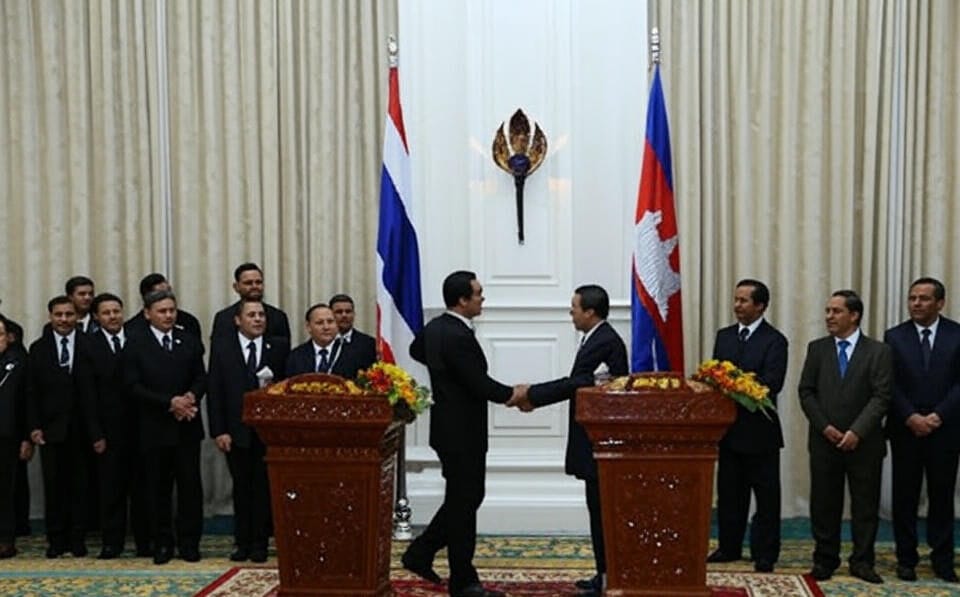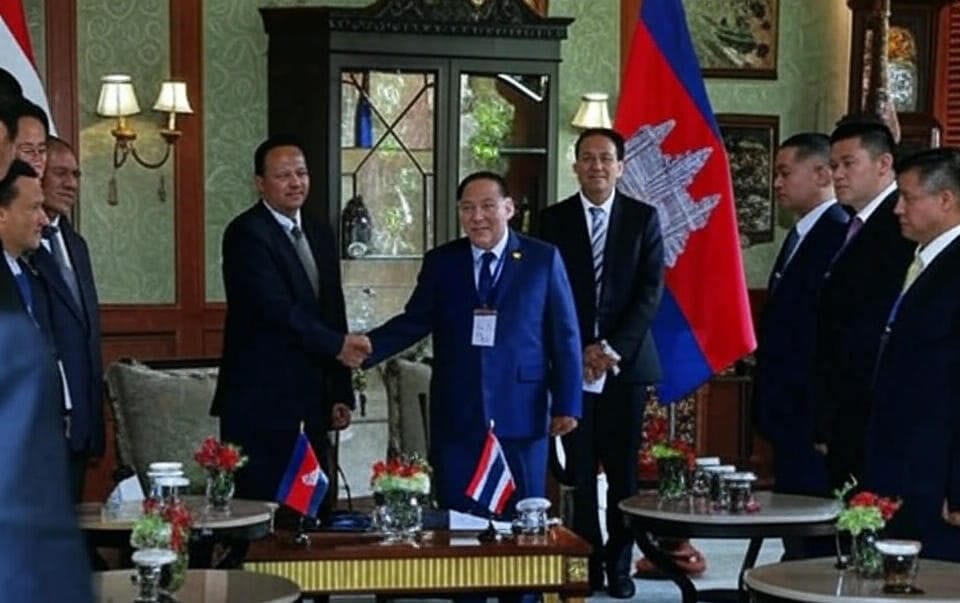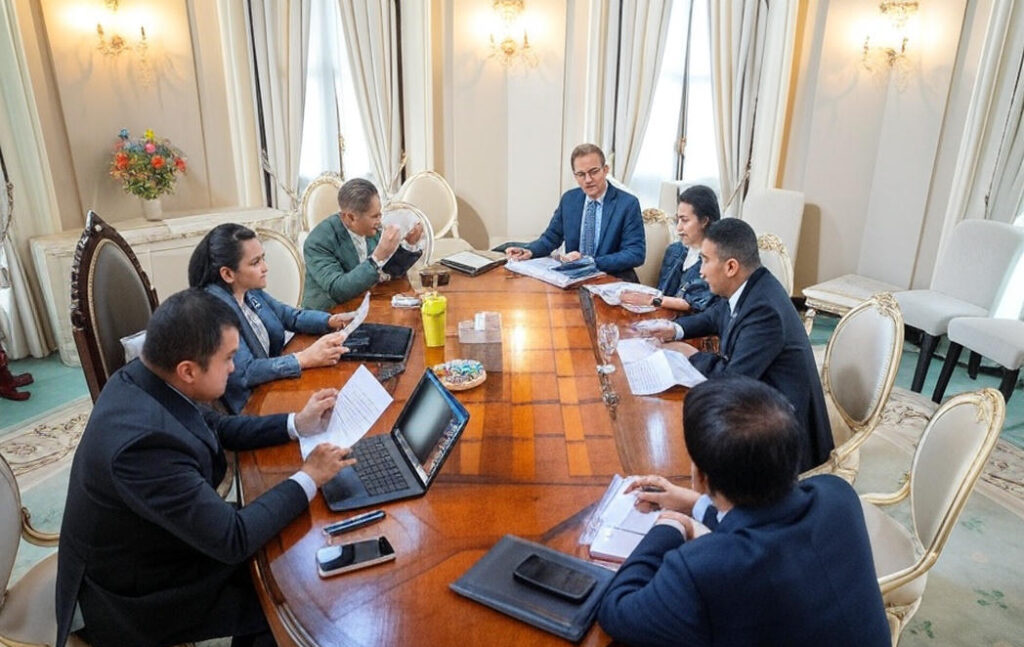
On July 28, 2025, Thailand and Cambodia signed a landmark ceasefire agreement, halting a week of violent cross-border clashes that left at least 34 dead and displaced over 168,000 people. Facilitated by Malaysia under the ASEAN framework, this accord offers a critical respite in a decades-long territorial dispute. While the agreement signals hope for peace, it also underscores the complex challenges ahead in resolving deep-seated tensions and addressing the humanitarian fallout.
Roots of the Border Dispute

The conflict stems from a longstanding dispute over a 4.6-square-kilometer area surrounding the Preah Vihear Temple, a 11th-century Khmer architectural marvel and UNESCO World Heritage SiteIn 1962, the International Court of Justice gave the temple to Cambodia. However, Thailand claims ownership of nearby areas, which has led to ongoing conflicts. The most recent conflict started in early July when Thai troops moved into the area. This led to heavy artillery fire and fighting on the ground, causing serious damage to border villages and forcing thousands to leave their homes.Both nations accused each other of initiating the violence, amplifying nationalist rhetoric and complicating diplomatic efforts.
The human cost has been staggering: 34 fatalities, including civilians, and widespread destruction of homes, schools, and infrastructure. Over 168,000 people fled to temporary shelters, facing shortages of food, water, and medical supplies. The crisis prompted urgent calls from the United Nations and ASEAN for de-escalation, setting the stage for Malaysia’s mediation.
Malaysia’s Diplomatic Intervention
The ceasefire was brokered in Kuala Lumpur, where Thai and Cambodian leaders, alongside military and diplomatic officials, convened for high-stakes talks. Malaysia, leveraging its neutral stance within ASEAN, facilitated negotiations that culminated in a comprehensive agreement. The terms include an immediate cessation of hostilities, partial troop withdrawals from contested zones, and the creation of a joint monitoring committee to ensure compliance. Both nations also pledged to expedite humanitarian aid to affected populations and support the repatriation of displaced persons.
Malaysian Prime Minister Anwar Ibrahim hailed the agreement as a triumph of regional diplomacy, stating, “ASEAN’s unity has paved the way for peace, but sustained commitment is essential.” The talks addressed immediate concerns while laying groundwork for future dialogue on the border dispute, a process expected to involve ASEAN and possibly international mediators.
Humanitarian Crisis and Regional Impact
The clashes have left a profound humanitarian toll. Displaced families, many of whom lost livelihoods and homes, are crowded into makeshift camps with limited resources. International aid organizations, including the International Committee of the Red Cross, have mobilized, but the scale of need overwhelms local capacities. The ceasefire includes provisions for coordinated aid delivery, with Malaysia and other ASEAN members offering logistical support to ensure supplies reach vulnerable communities.
Regionally, the agreement bolsters ASEAN’s credibility as a mediator in intra-regional conflicts. Past criticisms of the organization’s non-interference policy have often highlighted its limited effectiveness in resolving disputes. The success in Malaysia could strengthen ASEAN’s role in fostering stability, particularly as Southeast Asia navigates rising geopolitical tensions. However, experts warn that the ceasefire is a temporary measure, and without addressing the underlying territorial claims, the risk of renewed conflict persists.
Challenges and Path Forward

The ceasefire faces significant hurdles. The Preah Vihear dispute is deeply intertwined with national pride, making concessions politically contentious for both governments. Previous agreements, such as a 2011 ceasefire, faltered due to mistrust and sporadic violations. The joint monitoring committee will need robust mechanisms, including third-party oversight, to maintain transparency and accountability.
The humanitarian crisis demands immediate action.Rebuilding broken buildings and helping communities that have been forced to leave their homes will need a lot of money. I.
International donors, including the UN and regional partners, are expected to play a critical role. Long-term, both nations must engage in sustained dialogue to delineate the border, potentially involving international arbitration to achieve a binding resolution.
A Cautious Step Toward Peace
The Thailand-Cambodia ceasefire is a vital step toward de-escalating a volatile conflict that has caused immense suffering.Yet, the agreement’s success hinges on both nations’ commitment to its terms and their willingness to tackle the root causes of the conflict. For the 168,000 displaced and countless others affected, this truce offers hope, but only sustained diplomatic and humanitarian efforts will transform this fragile pause into a foundation for lasting peace in the region.





